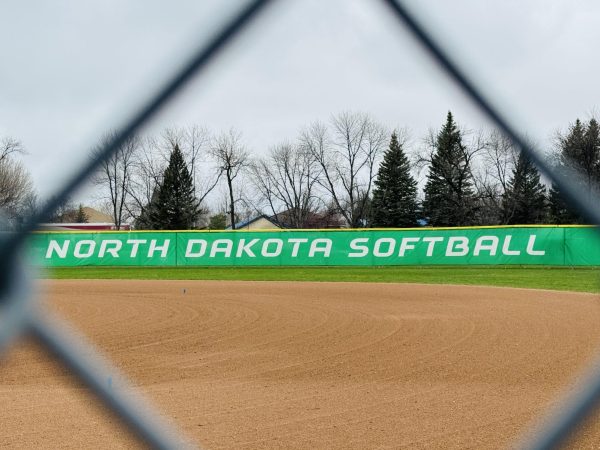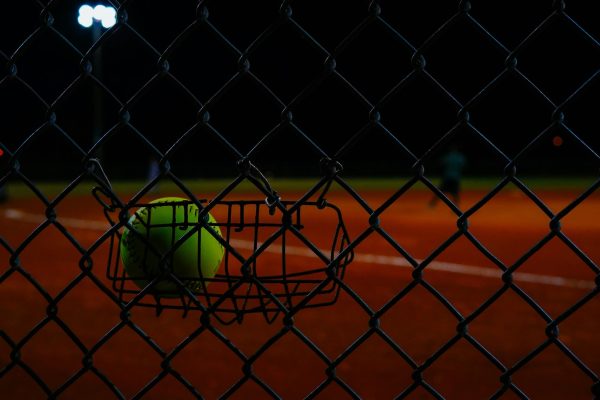10 Things I Learned Based on this Year’s March Madness Bracket
March 15, 2022
Grand Forks, N.D. —
10 Things I Learned Based on this Year’s March Madness Bracket
1. The tournament committee loves potential matchups and might be a measure used to organize brackets:
The best example of this would be the West Region which features Gonzaga, Duke, Michigan State, UConn, and Arkansas. Michigan State would play Duke in the Round of 32 if Michigan State beats Davidson on Friday and second-seeded Duke does not fall victim to the No. 15 seed again and beats CS Fullerton. Gonzaga, Duke, Michigan State, and UConn are some of the most historically successful programs in college basketball, and fans salivate over the idea of seeing these programs battling it out to win the region. Arkansas is one of the hottest teams in the country right now, winning 15 of their last 17 games before losing to Texas A&M in the SEC semifinals. In summary, the West Region is loaded this year.
Two other examples of the committee potentially looking to the future are putting Iowa/Iowa State and Michigan/Ohio State in the same region. These rivalries are two of the oldest and richest in all of college athletics. Iowa and Iowa State would not see each other until the Elite Eight, but Michigan and Ohio State could meet in the Sweet 16.
2. Texas A&M needed to win the SEC tournament to make the NCAA tournament:
Texas A&M could still technically find its way into the NCAA tournament as they are one of the committees “First Four Contingencies,” which means if any team needs to concede their spot due to COVID reasons, Texas A&M is the fourth team in line to be the replacement. However, despite beating the top seed in the SEC tournament and the No. 4 seed in the SEC tournament, there were still three teams ahead of them. Those teams were No. 2 seed Auburn and No. 4 seed Arkansas. Richmond and Virginia Tech being bid stealers had no effect on A&M’s tournament standing.
3. Non-Power 5 teams are gaining ground in the committee’s eyes:
When I refer to Power 5 teams, I am referring to teams in the group of conferences commonly referred to in college athletics as “Power 5” which are The Big Ten, SEC, Big 12, ACC, and PAC 12 conferences. The San Francisco Dons come out of the West Coast Conference (WCC) and were not one of the last four teams in, hence them receiving a No. 10 seed and not being put in the First Four, despite coming out of a conference that commonly has Gonzaga as its champion, St Mary’s as runner up, and nobody else in. Seeing San Francisco lose in the WCC semifinals but still receive an at large bid not in the First Four is encouraging for teams in conferences like the A-10 and American.
Speaking of the Atlantic 10, Davidson lost in the A-10 championship and still received a No.10 seeding, avoiding the play-in games. Dayton was not as lucky, being the first team out. With that said, they were still listed higher than Oklahoma and Texas A&M; progress is progress.
4. Tom Brady is not retiring:
As I am writing this, Tom Brady has rudely interrupted my progress and come out of retirement.
5. Sunday’s conference tournament championships carry little weight in terms of seeding lines:
Tennessee won the SEC tournament and is a No. 3 seed after being ranked in the top 10 in the final AP polls and being predicted as a No. 3 seed prior to their game on Sunday. Predictions are not always fact, but the argument can be made that Tennesse is better than fellow SEC teams Kentucky and Auburn right now.
Iowa won the Big Ten tournament and is a No. 5 seed after beating No. 3 seed Purdue and bubble team Rutgers on their way to the title. Iowa has won nine of their last 10, with their only loss being a two-point heartbreaker against Illinois on the road.
Outside of bid stealer Virginia Tech, the next lowest seeded Power 5 conference tournament champion is Tennessee as a No. 3 seed, and I would argue they should be seeded as a two.
6. Despite last season’s failure, the Big Ten still has respect amongst the committee:
The Big Ten sent nine teams to the tournament last season and only one made it out of the first weekend of the tournament. This season, the Big Ten has nine teams again, and an early storyline this tournament will be if the Big Ten performs better.
7. The Big 12 is highly respected by the committee this year:
What was commonly referred to as the toughest conference in college basketball is also the conference to have two No. 1 seeds in the tournament. The committee is saying that two of the top four teams in the country this year are in the Big 12. Also, of the nine eligible teams to make the tournament in the Big 12, six teams are in. None of them are in the play-in games either, with very few bracketologists having a team there prior to the field being released. Commissioner Bob Bowlsby must be happy right now seeing 67 percent of the eligible teams in his conference make the tournament.
8. A First Four team could (and likely will) make the Sweet 16 again:
First Four teams making it out of the first weekend of the tournament has become a trend as five teams have done it in the last ten tournaments. This season’s candidates are Wyoming, Indiana, Rutgers, and Notre Dame. Specifically, Indiana could be the team to do it as they beat Michigan and Big Ten top seed Illinois before losing on a buzzer-beater, off the backboard three to eventual Big Ten champion Iowa. Rutgers also has six quadrant one wins and went 12-8 in the conference with the most teams in the tournament. Wyoming has 25 wins and features a defense that gives up an average of 65 points per game (while also averaging 73 points per game themselves on offense). The winner of Wyoming vs. Indiana plays St. Mary’s and would then go on to play the winner of UCLA vs. Akron. The winner of Rutgers vs. Notre Dame would play Alabama who has lost three in a row and would play the winner of Texas Tech vs. Montana State.
9. Who you play against matters almost as much as who you beat:
The biggest example of this? Michigan. In the history of the tournament, 14 losses is the most any team has had and still made it as an at-large bid. This also includes teams that play in the First Four. 17 wins is among the fewest any team has had as an at-large bid in the 68-team era. As a team that went exactly 17-14 this year, having 15 of those games come against quadrant one opponents is what gave them the edge over a team like Wyoming who is in the First Four with 25 wins but only nine games played against quadrant one opponents. The thing is, Michigan has five quad one wins while Wyoming has four.
10. This is going to be a fun tournament:
This should go without saying, but this time of year is amazing for sports fans, basketball fans, and all people in general. The bracket is iconic, the upsets are special, the Cinderella teams always reveal themselves, and the buzzer beaters are not a matter of if but a matter of when. The three-week stretch of time to sort out who will crown themselves the national champion contains some of the most incredible basketball anyone can ask for. Whether you take a deep dive on all 68 teams and decide who will win it all based on extensive research or pick your bracket based on mascots, good luck this year and enjoy the madness.
Daniel Krivacs is a Dakota Student writer and can be reached at [email protected].












